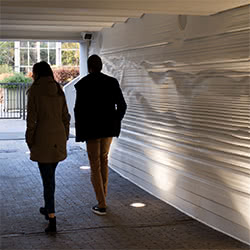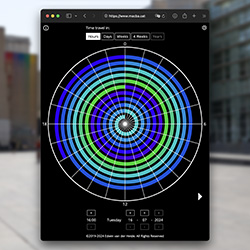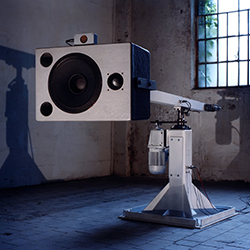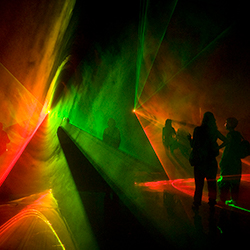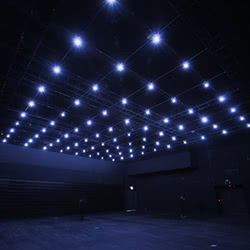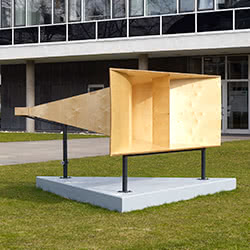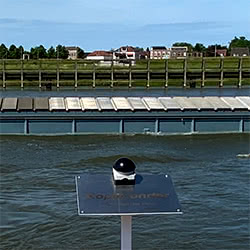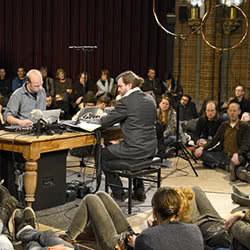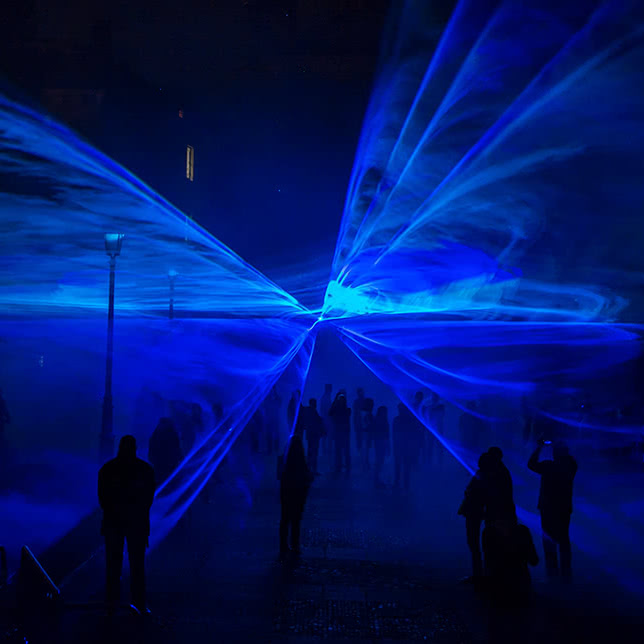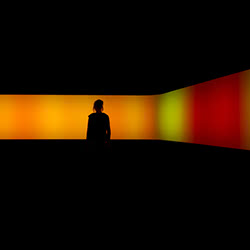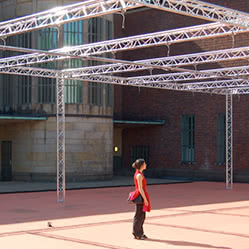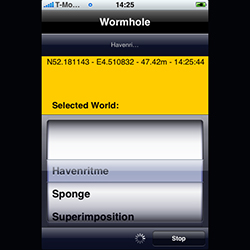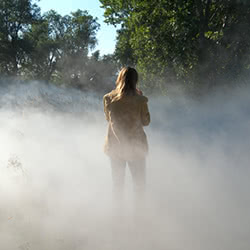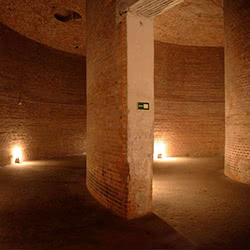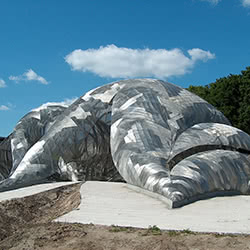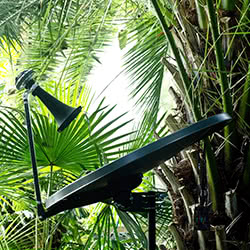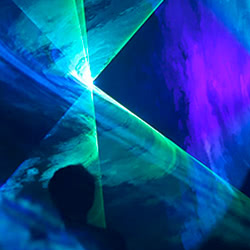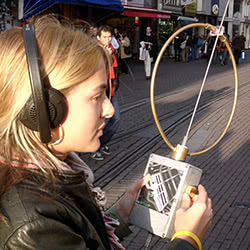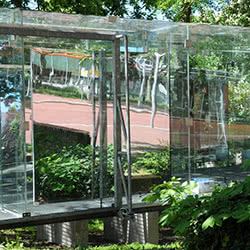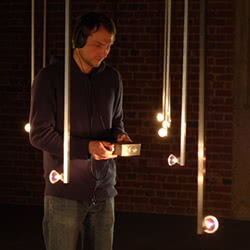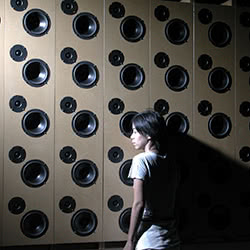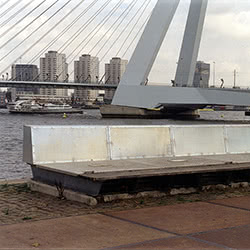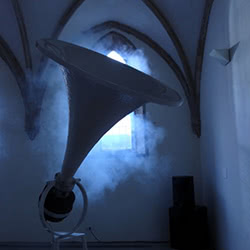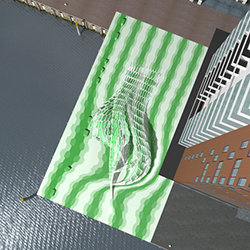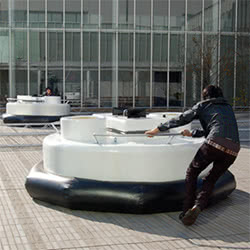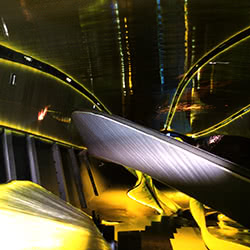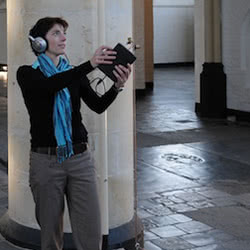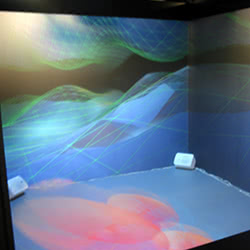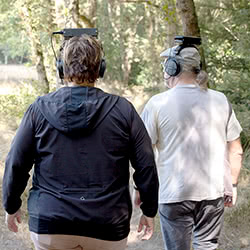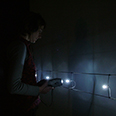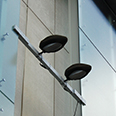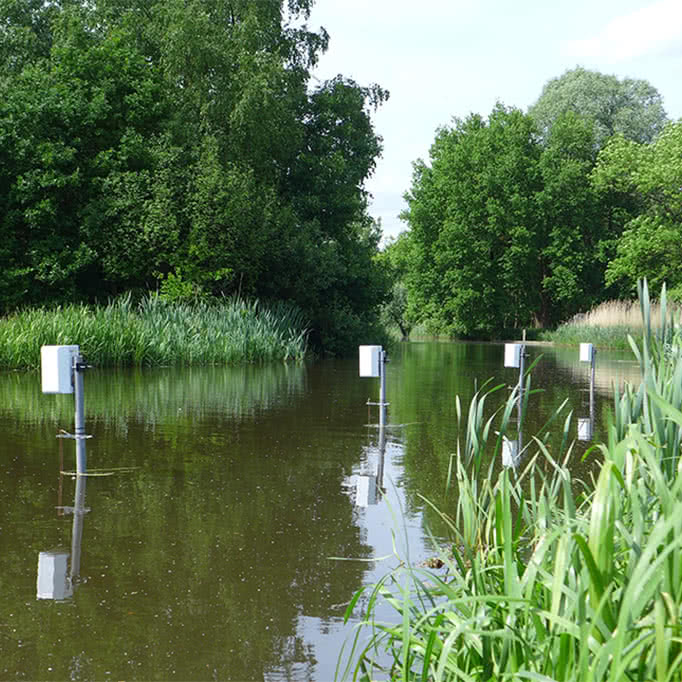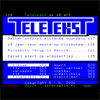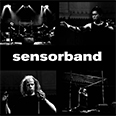
In this engine-powered installation, a speaker is mounted onto a rotating arm that is several meters long. Like a watchdog, the machine scans the surrounding space for visitors. Closer investigation would be tempting fate, with the rotating arm swinging so powerfully round. You hear the impressive sound of the mighty motor revving up, turning faster and faster. You can feel the displacement of air as the speaker whizzes past you, and you had better step back, out of reach. The machine slows down and, when the shock wears off, you start exploring the space, with your movements manipulating the sound it produces. Just don't get too close! Spatial Sounds (100dB at 100km/h) builds up a physically tangible relationship with the visitor, since it is the game of attracting and repelling between machine and visitor that determines its sound and movement.
The installation:
Spatial Sounds (100dB at 100km/h) consists of a speaker on a long arm with a counterweight at the other end. The arm can spin, and can be regulated between very slow and very high speeds, with a maximum of 100 km/h. A high-speed distance-measuring sensor is mounted close to the speaker and measures the surrounding space. It scans any objects and visitors in this space. Because it is spinning, it creates a spatial depiction of the space, resulting in a continuously changing, dynamic map, rather similar to traditional radar.
Spatial Sounds (100dB at 100km/h) is an interactive installation that is capable of very intelligent behavior. Not only can the arm spin quickly or slowly, it can also make very well-defined movements in both directions. On the one hand, Spatial Sounds (100dB at 100km/h) lives a life of its own; on the other, it reacts very directly to the people in its space. The sensor can detect how close the visitors are and where they are in relation to the arm. When the installation scans the space, it makes inspecting movements and generates sounds that symbolize this scanning. It produces remarkably short, loud pulses and 'listens' to the reverberations from the empty space. The pulses combine different frequency ranges and rhythmical patterns. When visitors enter the room, they are detected immediately. The installation reacts in both a musical and a gestural way. The sounds relate directly to both the position of the arm and the dynamic 'map' of the space and the visitors. These sounds are very physical. For example, when the speaker is pointing at someone, it will generate a specific sound. This is also the case at high speeds and with several people in the room. However, the sounds and movements of the arm also tempt visitors to move around. Different locations in the space represent different sounds, as does the distance of the visitors to the rotating arm.
Technical details:
The sound and movements of Spatial Sounds (100dB at 100km/h) are generated in real-time, and the algorithms for generating these are defined very precisely. However, the actual sounds depend very much on what visitors do with the installation. On top of the speaker is a sonar sensor that measures the distance between visitors and objects and the speaker. The sensor takes its measurements from a beam facing away from the speaker, and there is also an angle sensor mounted on the axis of the installation. The data from both sensors are transmitted to the computer that generates the sound. When the installation is placed in a room, it first learns the shape of this room while it is still empty. In this way, it can distinguish between people in a space and the space itself. Thereafter, the computer is able to recognize the various visitors to the space.
Spatial Sounds (100dB at 100km/h) reacts in different ways to its visitors. It can react with movement and/or sound to the behavior of individuals or to visitors in general. And besides reacting to visitors, the sound is also directly related to the speed of the arm and the shape of the room around it.
prizes
| concept and realization: | Marnix de Nijs & Edwin van der Heide |
| construction assistance: | Tom van der Stelt |


| concept and realization: | Marnix de Nijs & Edwin van der Heide |
| construction assistance: | Tom van der Stelt |
